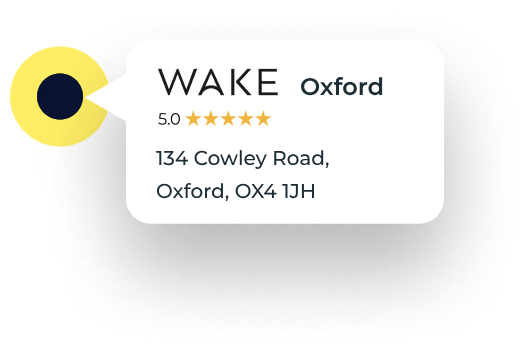Before I start I’m going to share some staggering statistics about Amazon and it’s dominance of the online retail sector. The statistics also illustrate how popular Amazon really is. I’ll also draw the veil back slightly and show you who Amazon customers are really buying from, and some reasons why the juggernaut that is Amazon just keeps rolling along. Not only is this retail empire growing spectacularly, it’s also taking over the hearts and minds of retail shoppers.
Statistics
As we’ve mentioned in previous articles, Amazon is the largest online retailer in the world generating £142.32bn in revenue in 2017 with net income growth of 27.8%. In 2016, the eCommerce company’s net revenue was £108.79bn, up from £85.61bn in 2015. And some statistics of particular interest to businesses already using Amazon as a sales channel, or thinking of using Amazon:
- 26,525 new sellers on the UK Amazon Marketplace in 2019 so far
- 2.5 million active sellers across all Amazon Marketplaces, from a total of 6 million registered sellers
- 24,000 sellers turn over in excess of £750,000
- 50,000 sellers turn over in excess of £350,000
Impressive numbers for any business but for Amazon, where the majority of sales are by third parties (over 50%) using Amazon Marketplace, the numbers tell us another, very interesting story.
Who are you really buying from?
Amazon is unique in so many ways, but specifically as a retail sales channel; it’s model is very different. Amazon is a platform of multiple parts all seemingly available from a single seller, Amazon. But it gets interesting when we start to look at the Amazon platform makeup.
Amazon Marketplace
A third party sales channel where sellers of any size can advertise and sell their products. According to SPS Commerce: “Amazon Marketplace is the platform that facilitates anyone to sell directly to the end-user or online customer. Amazon takes a referral fee from each sale. The seller takes on merchandising responsibilities and manages their prices. Some suppliers use the Marketplace to introduce new products with greater control over prices. It’s also a good way to sell slow-moving items, such as last year models or accessories”.
Amazon own brand
Amazon owns and sells in excess of 60 own brand labelled products. Ranging from AmazonBasics through to Presto household detergent, the product list has grown exponentially since launch in 2009 and continues to grow with new products coming on stream all the time. As Jason Del Ray from ReCode says: “It’s private-label approach has the potential to be disruptive because of how much data it can easily analyse about competitor brands that sell on its site — which products and price points are selling, and why — after mining customer reviews”. With information like this flowing through its data silos it will be pretty hard for Amazon to get it wrong.
Big Brands
Whilst big brands have always had a presence on Amazon, more and more are realising that if you can’t fight them you’d better join them, and quick. Our view is that Amazon’s recent effort to push brands onto the Marketplace platform can only work in their favour; no longer at the mercy of Amazon pricing policies, and protected by Brand Registry, Big Brands will finally be able to stretch their marketing wings and gain a bit of retail traction. All this conspires to make us think we’re buying from Amazon, where actual Amazon generic products make up only a small proportion of total sales. The source of the products we buy are masked. We think we’re buying from an Amazon store, which is what Amazon wants, it promotes trust, enables Amazon to wrap us in the warm blanket of it’s services (see below), and generally gives us that ‘feel good’ feeling that you get from a business with a heart and soul.
Why the juggernaut keeps growing and why people (consumers) are more likely to buy from Amazon than other e-commerce websites.
So, now we know all about Amazon’s tactics to make us believe in the one true retail God, here are some further insights into the masterplan, and why customers really are more likely to buy from Amazon than anywhere else online. Amazon is a Retail search engine that consumers use as a reference when shopping, and it goes like this:
- See something you like
- Check it, and the price, out on Amazon, because you think Amazon sells everything
- If its clothes, go and try it on at a store if it’s not remove this step
- Go back to Amazon and buy it, even though there are times when Amazon is more expensive
Because Amazon has the following services that seem to act like drugs and mask our true intentions.
Amazon Prime
One of the great drivers of growth, Amazon Prime’s two-day delivery offer at £7.99 a month, subscribed to by 8 million users in the UK, is just irresistible to most online shoppers. I’m guilty of checking the Prime box every time I search for something, and then not looking at the price difference, because Prime products are generally ‘the cost of the postage’ more expensive. All the other subscribers must be as well because Prime is growing fast. Throw in Films, Music, and cloud, Prime is a customer retention winner.
One-Click Purchase
Although Amazon’s 1999 patent for one-click ordering has recently expired, it’s had the last twenty years to embed itself in our consciousness. As Shareen Pathak from Digiday says: “The Amazon 1-Click button lets customers buy things with just one click without having to enter and re-enter billing, payment or shipping information. In the last couple of decades, it has become a major part of Amazon’s checkout process, being extended to other Amazon products like Dash, which was essentially one-click ordering via a small button, and Echo, where customers can buy things with one voice command”. Imagine a life without one-click purchasing and entering all that info every time you buy something? No thanks, I’ll stick with Amazon if it means I can use one-click purchase. And for sellers? Other than customer loyalty, the big advantage is that one-click ordering gets rid of cart abandonment, one of the bugbears of e-commerce. Recent research shows that most e-commerce retailers suffer from over 70% cart abandonment; if you can remove the cart, you remove cart abandonment. Whilst Amazon’s patent expired at the end of 2017, there is no serious evidence of any other retailers launching a similar cart, or non-cart, experience. One-click purchase is another customer retention winner.
Returns policy
Remember in the dark days of customer returns policies when trying to get your money back always led you to a difficult conversation with the so-called ‘Customer Service’ team? Well, those days are over because Amazon just gives you your money back, yes it’s true, they just give you your money back. And you never have to talk to anyone, ever. Amazon’s returns policy is another customer retention winner.
A warm cuddly blanket
Amazon becomes a warm cuddly retail blanket as you nestle in the arms of prime, dreaming of your one-click purchases, safe in the knowledge that Amazon’s returns policy will never let you down. Do you want to shop elsewhere? No, of course you don’t.
In a word? Yes, customers are more likely to buy from Amazon than other e-commerce websites.





